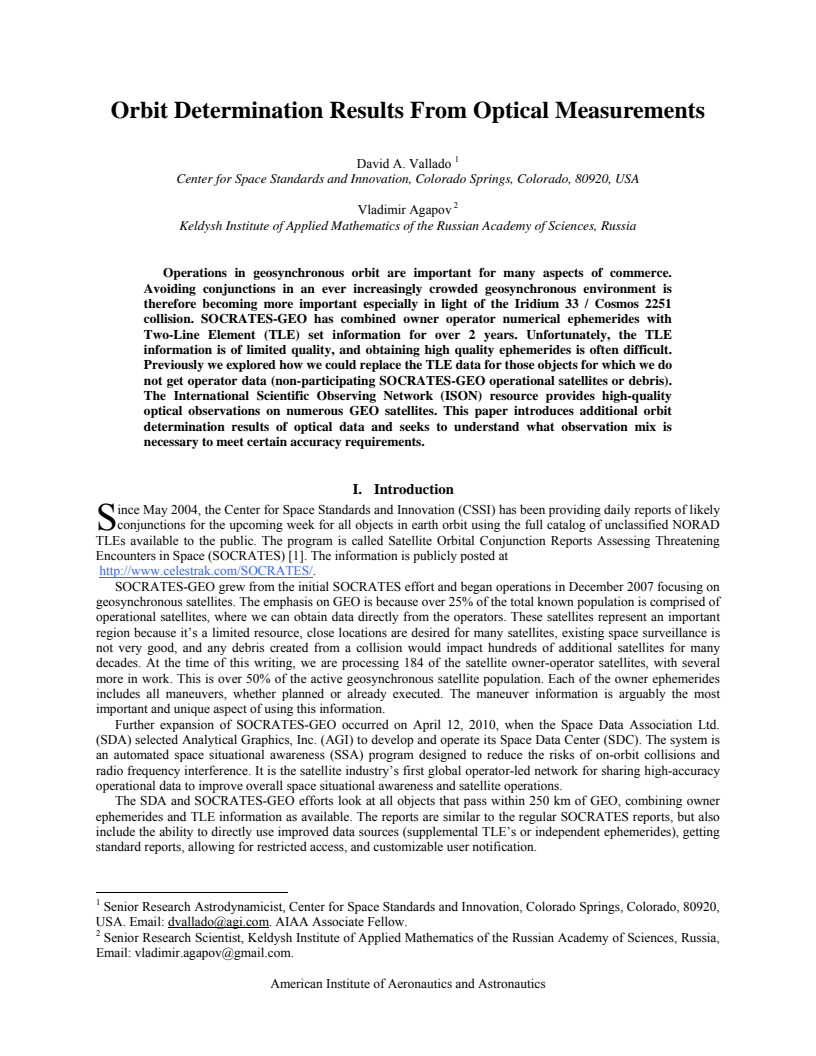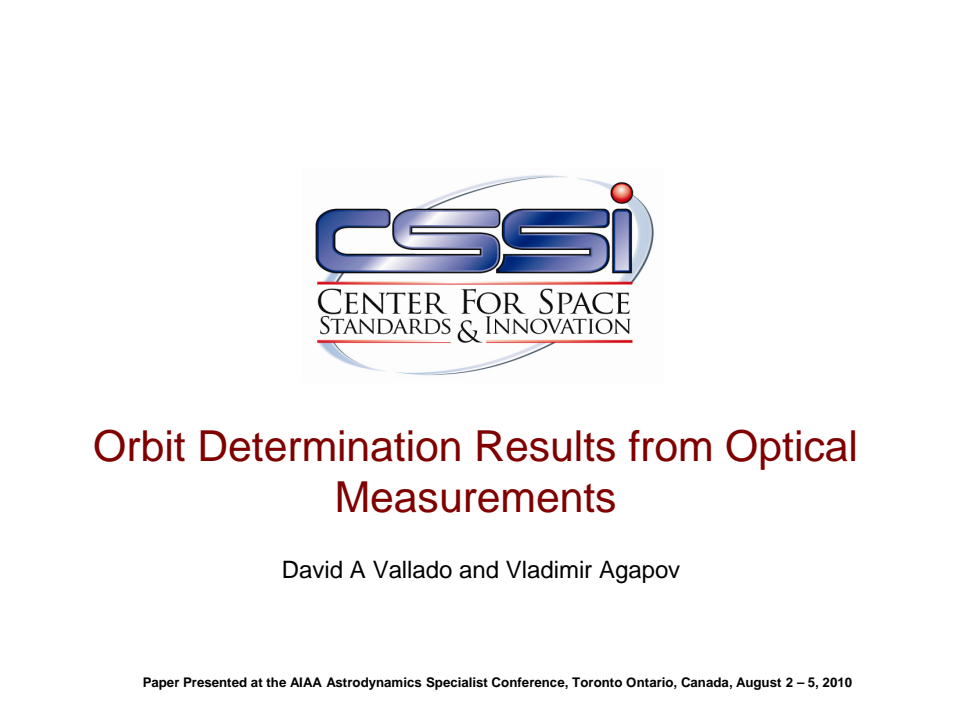Orbit Determination Results From Optical Measurements


Id: 293
Type: Conference paper
Published: 08/02/2010
Event: AAS/AIAA Astrodynamics Specialist Conference 2010
Authors:
Click an author to filter the list of related assets below.Abstract:
Operations in geosynchronous orbit are important for many aspects of commerce. Avoiding conjunctions in an ever increasingly crowded geosynchronous environment is therefore becoming more important especially in light of the Iridium 33 / Cosmos 2251 collision. SOCRATES-GEO has combined owner operator numerical ephemerides with Two-Line Element (TLE) set information for over 2 years. Unfortunately, the TLE information is of limited quality, and obtaining high quality ephemerides is often difficult. Previously we explored how we could replace the TLE data for those objects for which we do not get operator data (non-participating SOCRATES-GEO operational satellites or debris). The International Scientific Observing Network (ISON) resource provides high-quality optical observations on numerous GEO satellites. This paper introduces additional orbit determination results of optical data and seeks to understand what observation mix is necessary to meet certain accuracy requirements.
Citation:
Vallado, David A. and Vladimir Agapov. 2010. Orbit Determination Results from Optical Measurements. Paper AIAA-10-7525 presented at the AAS/AIAA Astrodynamics Specialist Conference, August 2-5. Toronto, Canada, accessible at https://comspoc.com/Resources/Content/Private/C-20220425T155222/Paper/AIAA%2010-xxx%20Orbit%20Determination%20Results%20from%20Optical%20Data.pdf.
Papers with related authors:

ORBIT DETERMINATION ISSUES AND RESULTS TO INCORPORATE OPTICAL MEASUREMENTS IN CONJUNCTION OPERATIONS
Read More



Using Spacebook and Cesium to Promote and Enhance Flight Safety
Read More

Actionability and Persistence Of Conjunction Data
Read More

Actionability and Persistence of Conjunction Data
Read More

Practical issues with using a full gravity field
Read More
LEO satellite behavior during the May 2024 Gannon geomagnetic storm
Read More
Deep operator and SSA collaboration for space sustainability
Read More
Synthetic Covariance Production Using a New Digital Approach
Read More
Contrasting the Inflection Points and Efforts in Space Traffic Coordination and Management
Read More
Addressing the debilitating effects of maneuvers on SSA accuracy and timeliness
Read More
Actionability and Persistence of Conjunction Data
Read More
DEEP OPERATOR AND SSA COLLABORATION FOR SPACE SUSTAINABILITY
Read More


Russian ASAT Debris Cloud Evolution and Risk
Read More
Results of comprehensive STCM data fusion experiment
Read More





Debris Risk Evolution And Dispersal (DREAD) for post-fragmentation modeling
Read More
Sequential Processing of ILRS Observations – Experiences over the last 5 years
Read More

Fragmentation event debris field evolution using 3d volumetric risk assessment
Read More

Application of New Debris Risk Evolution And Dissipation (DREAD) Tool to Characterize Post-Fragmentation Risk
Read More
Orbital Strategies to Mitigate the Solar Exclusion Effect on Space-Based Observation of the Geosynchronous Belt
Read More
New Consolidated Files for Earth Orientation Parameters and Space Weather Data
Read More
Updated Analytical Partials for Covariance Transformations and Optimization
Read More
Sequential Orbit Determination Using Satellite Laser Ranging
Read More
Improved SSA through orbit determination of Two Line Element Sets
Read More

Evaluating Gooding Angles-only Orbit Determination of Space Based Space Surveillance Measurements
Read More


